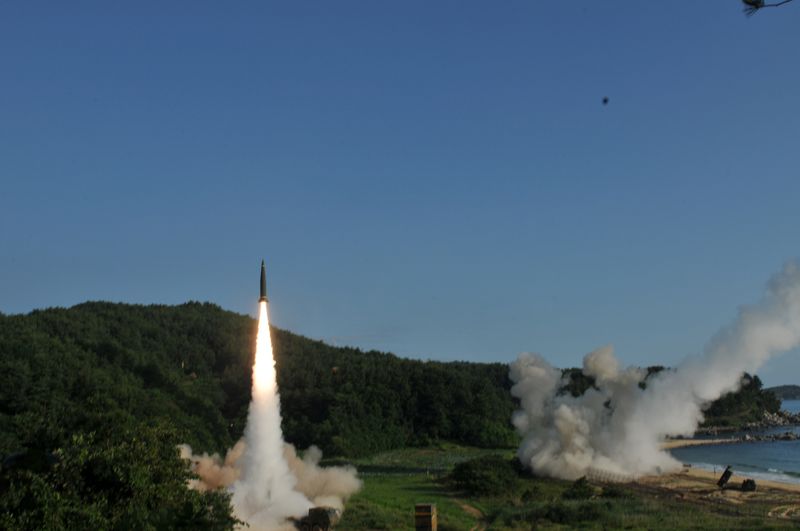By Steve Holland and Idrees Ali
WASHINGTON (Reuters) -The United States in recent weeks secretly shipped long-range missiles to Ukraine for use in its battle to fight off Russian invaders, and Ukraine has now used them twice, a U.S. official said on Wednesday.
The missiles were contained in a $300 million military aid package for Ukraine that U.S. President Joe Biden approved on March 12, said the U.S. official, speaking on condition of anonymity. The official would not say how many of the missiles were sent.
White House national security adviser Jake Sullivan, at a briefing for reporters, confirmed that a "significant number" of the missiles had been sent to Ukraine and said "we will send more."
He said Ukraine has committed to only use the weapons inside Ukraine, not in Russia.
Some of the missiles were contained in a $1 billion weapons package for Ukraine that President Joe Biden approved on Wednesday, Sullivan said.
The missiles were used for the first time in the early hours of April 17, launched against a Russian airfield in Crimea that was about 165 km (103 miles) from the Ukrainian front lines, the official said.
The official said Ukraine used the weapon a second time overnight against Russian forces in southeastern Ukraine.
Whether to send the Army Tactical Missile Systems (ATACMS) with a range up to 300 km was a subject of debate within the Biden administration for months. Mid-range ATACMS were supplied last September.
The Pentagon initially opposed the long-range missile deployment, fearing the loss of the missiles from the American stockpile would hurt U.S. military readiness. There were also concerns that Ukraine would use them to attack targets deep inside Russia.
Russia's use of North Korean-supplied long-range ballistic missiles against Ukraine in December and January, despite U.S. public and private warnings not to do so, led to a change in heart, the U.S. official said.
Also a factor in U.S. decision-making was Russia's targeting of Ukraine's critical infrastructure, the official said.
"We warned Russia about those things," the official said. "They renewed their targeting."
In late January the U.S. military found a way to satisfy their concerns about military readiness, which enabled the administration to move forward. They began acquiring new missiles coming off the Lockheed-Martin production line.
Biden met with his national security team in mid-February and agreed to accept the unanimous recommendation of his advisers to send the missiles to Ukraine. Involved in the discussion were national security adviser Jake Sullivan, Defense Secretary Lloyd Austin, Secretary of State Antony Blinken and Joint Chiefs of Staff Chairman C.Q. Brown.
The challenge at that point was to figure out how to pay for the missiles. The United States had exhausted all of its funding options and congressional gridlock stymied further aid.
An opportunity arose in March, when several Pentagon contracts came in under bid. Biden was able to use the difference to send $300 million in assistance to Ukraine.
Biden told his team to include the long-range ATACMS in this funding package, but to do so secretly in order to maintain operational security and the element of surprise for Ukraine, the official said.
